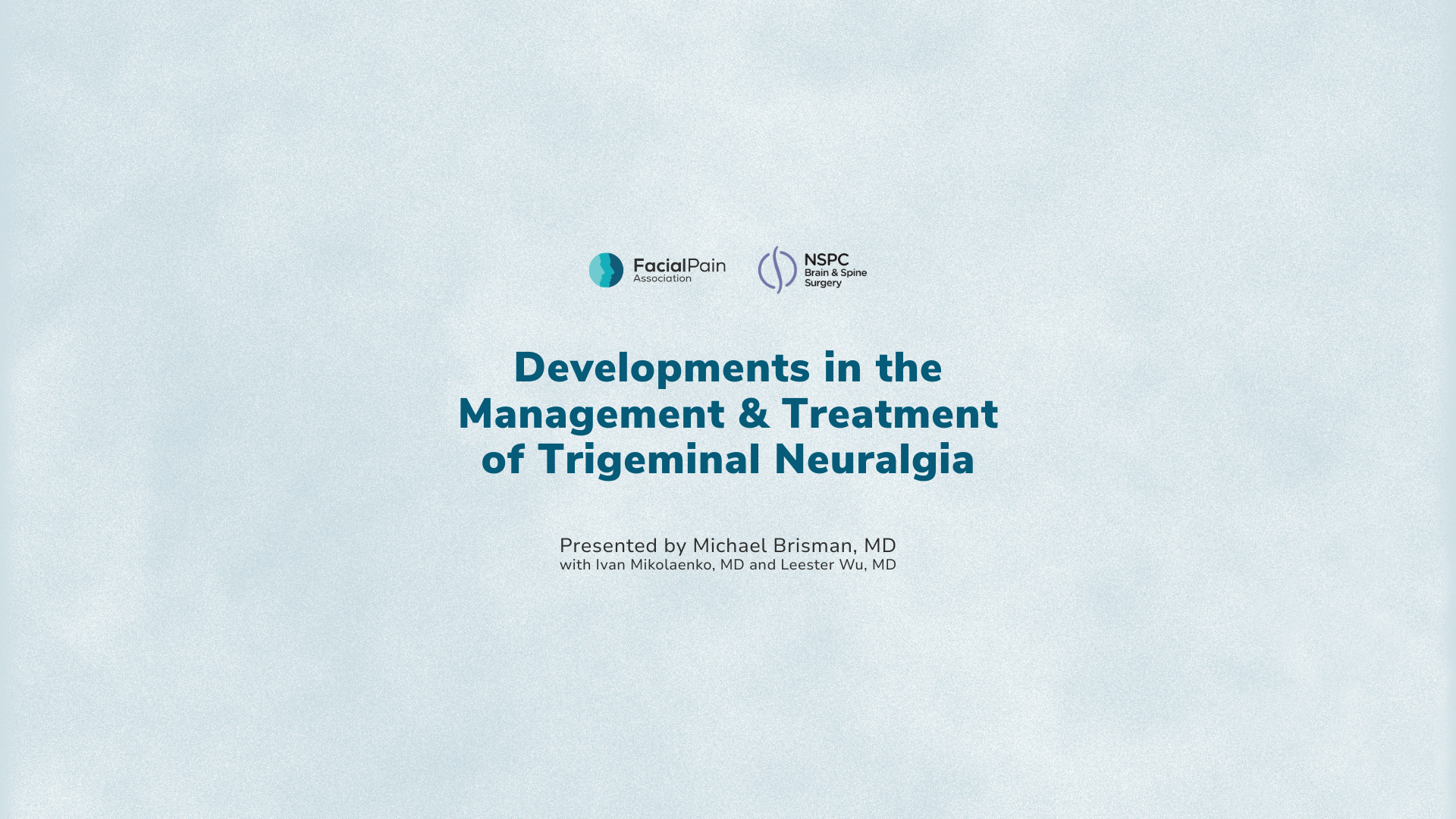
Pain is the body’s alarm system. It detects situations when the body is being harmed and signals that it is time to escape from danger or rest after an injury. Pain causes an unpleasant experience, but it keeps us safe in a world filled with danger. As such, our ability to feel pain is an important part of well-being. However, sometimes, this alarm system malfunctions. It no longer activates only when the body is being harmed, but instead does so in an aberrant and uninformative manner.
The result is a persistent unpleasant experience that can cause immense suffering. It no longer keeps us safe from danger, but instead, it is the danger. This is the case for many individuals suffering from chronic pain, particularly in cases where it does not improve with medication.
How can we think of “typical” and “atypical” facial pain within this framework? These terms can have different meanings depending on the context, and, while these terms are no longer accepted by international committees (International Headache Society, European Academy of Neurology, and the International Association for the Study of Pain) of medical and surgical experts concerning trigeminal neuralgia, your physician or other clinicians may use them with you. In general, “typical” facial pain implies a stereotyped problem in the malfunctioning alarm system, which has a clear solution (akin to a faulty triggering mechanism which needs repair). A common example is classical trigeminal neuralgia, which is defined by brief episodes of intense, “electric” pain, limited to well defined areas on one side of the face in the setting of MRI evidence of displacement of the trigeminal nerve by a blood vessel.
This pattern of pain typically implies that the underlying cause is vascular compression of the trigeminal nerve as it enters the brainstem at the base of the skull. This type of pain often improves after microvascular decompression surgery (MVD) which involves separating the trigeminal nerve from compressive blood vessels.
On the other hand, what is often called “atypical” facial pain suggests a non-stereotyped problem in malfunctioning alarm system, such that the underlying cause (and solution) is poorly understood. For example, facial pain that is constant, deep, and poorly localized indicates that the cause is unknown (correctly classified as persistent idiopathic facial pain). Unfortunately, there is no established treatment for persistent idiopathic facial pain if it is not responsive to medication.
Neuromodulation is a compelling strategy to treat chronic pain that is refractory to other treatments. The idea is to physically alter brain circuitry involved in pain experience to reduce suffering. This is akin to physically manipulating the components of a malfunctioning alarm system to dampen the sound, or ideally, restore it to working condition. However, a major challenge to neuromodulation is the immense complexity in human brain circuits that process pain and how they malfunction to generate chronic pain. Because of our limited understanding of these complexities and how they vary from individual to individual, neuromodulation treatments have not yet been shown to be reliably effective across individuals with chronic pain. Instead, some patients show benefit, whereas others do not.
As such, the neuromodulation treatments discussed below are not yet supported by large clinical trials and do not carry Food and Drug Administration (FDA) approval. Nonetheless, they show promise as some patients show remarkable benefit, and they can be considered in patients who suffer from chronic pain but have exhausted all other treatment options, and certainly, within the context of clinical trials.
Neurosurgical techniques for neuromodulation have evolved considerably over the past several decades. In this instance, we are highlighting two contemporary techniques which have had tremendous success in treating movement disorders such as Parkinson’s disease and essential tremor. Each of these techniques have unique advantages and disadvantages as discussed below.
Deep brain stimulation (DBS) involves applying electrical stimulation through electrodes that are physically implanted in the brain and a small battery-powered pulse generator implanted under the skin in the chest, akin to a pacemaker. The procedure is performed in the operating room and requires admission to the hospital (typically for an overnight stay). Usually, two DBS electrodes are placed and target specific brain regions thought to be involved in generating chronic pain.
Approximately one to two weeks after the procedure, the DBS system is turned on and the system is programmed to find the stimulation settings that maximize pain relief. This process can take several months. The specific benefits involve the ability to target a wide range of brain structures, and the ability to alter stimulation settings, which can be useful for increasing benefits and minimizing harm from side effects. The specific risks involve those related to implanting a device within the brain, namely bleeding and infection. Emerging innovations involve a trial period where multiple electrodes are placed widely within the brain to maximize the chance of finding a therapeutic target for stimulation.
Focused ultrasound (FUS) involves ablating brain tissue using thermal energy generated from ultrasound waves transmitted through the skull. The goal is to disrupt brain circuits that are necessary to generate chronic pain, without the need for a skin incision, an opening in the bone, or an insertion of a device into the brain. The procedure is performed in the MRI scanner with the patient awake, and typically does not require admission to the hospital. It does require a complete head shave and can only be performed if the skull density is within a range that enables predictable transmission of ultrasound waves into the brain. The specific benefits are that the procedure avoids many of the side effects from traditional surgery, such as bleeding or infection. The ablation is permanent and can potentially have long-lasting adverse effects in rare circumstances.
Each of the techniques discussed above show promise and can potentially be of benefit for patients with treatment-refractory chronic pain, such as persistent idiopathic facial pain. Nonethless, each technique also has risks that must be carefully weighed on an individual basis. Ultimately, there is a need to develop treatments that are reliably effective across patients with chronic pain, such that they can be supported by large clinical trials. This will require a better understanding of how brain circuitry malfunctions in each individual patient, so that the neuromodulation treatment can be tailored to specific cause of malfunction. Research efforts focused on this goal are critically important as there is an immense need to ease suffering in individuals with treatment-refractory facial pain.










